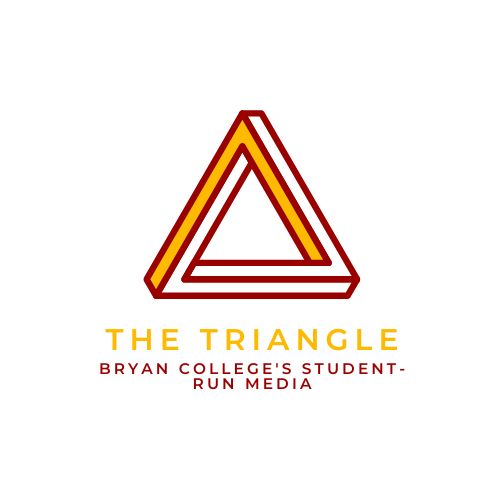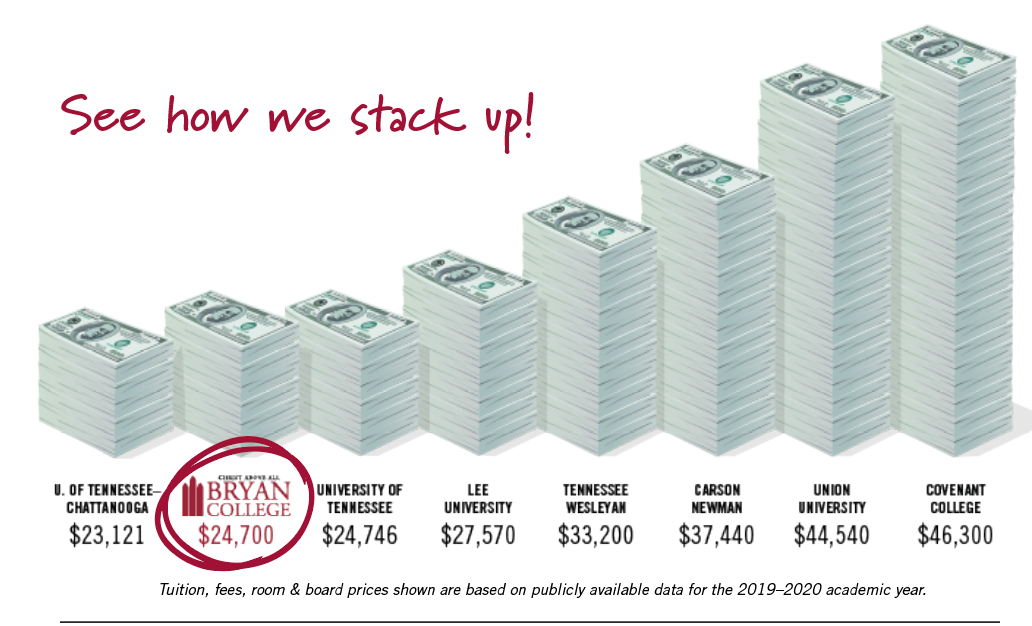Written by: Mathäus Schwarzen, staff writer
DAYTON, TN—When Bryan College announced last September that the school was cutting the cost of tuition by $11,000, the news was greeted with cheering and applause. The announcement, made by Trustee Lebron Purser and Vice-President of Academics Douglas Mann, and the press conference immediately afterward were covered by news organizations such as the Chattanooga Times Free Press, who documented students’ excitement.
Hours later, as students were issued an estimated cost for the Fall 2020 semester, the sentiment was no longer as exuberant. College officials hadn’t accurately conveyed that the school was also cutting average scholarship packages by $11,000, negating the price cut for many current students.
While the school issued an apology for the confusion, Director of Financial Aid and Retention David Haggard said the goal was not to reduce the price for students as much as it was to provide a temporary freeze on rising costs.
“For the year of 2020-21, you as a student will not see any additional expense that you would have normally incurred returning to Bryan,” Haggard said. He also stressed that almost all students would see a decrease in their overall cost of attendance, and that he was willing to work with students to ensure that held true.
“I’m still committed to making sure that a student is paying the same as they were last year,” Haggard said.
Now that the fall 2020 scholarship amounts have been released, that appears to be true—for returning students. While the College is working on each returning student’s financial aid award to ensure that they will pay the same as previous semesters, incoming freshmen will be faced with a field of academic scholarships that have all been reduced in keeping with the tuition reduction.
The reductions themselves are steep. The Presidential Merit scholarship, which is the highest academic scholarship the school offers, has dropped from $18,000 to $6,000 annually—a 66% reduction. The Dean’s Merit Scholarship has been reduced by 90%.
But, despite the apparently steep reductions, academic scholarships will still add up to roughly the same discount as before. The sole exception is the Presidential Merit Scholarship, which will amount to a $1,000 smaller reduction in 2020-21 for incoming freshmen.
The College says that the new numbers, however, will not have any effect on returning students’ costs.
“The changes in scholarships and awards to incoming students for Fall 2020 will not impact the awards of current students,” Haggard said.
Haggard said that the scholarship amounts listed on the Bryan website do not apply to returning students, and that they should not expect their 2020-21 scholarship award to match those numbers.
The savings for returning students are based on the tuition reduction and a customary 4% tuition hike that will not be occurring. If a returning student paid more than $16,900 for their annual tuition after scholarships during the 2019-20 school year, they stand to save a considerable amount of money on the 2020-21 school year. Any student who paid less than the new price, however, will likely not see much change in cost.
That price tag does not include the benefits of need-based aid, or the added cost of room and board. Bryan College has chosen not to reduce the cost of room and board along with the tuition reduction, instead temporarily freezing it at $7,800 annually. That brings the total cost of attendance at Bryan for the 2020-21 school year to $24,700 before scholarships and financial aid.
Some current students stand to save money in the upcoming year, but Haggard said repeatedly during his talks that the changes were really geared toward incoming freshmen.
“From my perspective, it’s to be able to provide access to people that are looking and trying to make a good decision on, financially, where their student should go, and to be able to feel more comfortable with those prices before they even walk in the door,” Haggard said at the second of two informational meetings held by the school. “We believe in what Bryan is doing and we want to get that into the ability of more students to make that selection.”
The incoming freshmen who will benefit most from the new financial structure at Bryan College will be those with lower GPAs, who do not qualify for as much in academic scholarships, and whose families’ income is high enough to negate any need-based aid from the government.
Calculating the need-based financial aid a student will receive from their Free Application for Federal Student Aid (FAFSA) is difficult. Generally, need-based aid decreases by $3,000 for every $10,000 increase in family income, and $5,000 for every $10,000 increase in personal income.
Most need-based financial aid, however, has a maximum. The Pell Grant, for example, is the largest need-based Federal Grant available through the FAFSA. Haggard said that 30% of the student body received some amount of Pell Grant in the 2019-20 school year. However, that grant maxed out at $6,195 during the 2019-20 school year, when the cost of tuition, room and board at Bryan College was $35,700.
Bryan College isn’t alone in its publicized tuition cut. Small schools across the United States are beginning to cut their prices in order to compete with better-known colleges in the area.
The changes usually don’t incur any actual savings for students, but are instead aimed at lowering the cost of tuition past a psychological barrier that makes many private schools sound too expensive, according to the New York Times. The cuts are usually intended to counter falling enrollment numbers and make the school more attractive to prospective students.
The latest report from the Bryan College Office of Institutional Effectiveness fits this description. According to the report, undergraduate enrollment from 2013 to 2018 at Bryan College fell by 24%.
That drop is most likely the result of an increased number of students with dual-enrollment credits, according to Haggard. Students already in possession of college credit are able to graduate early, causing the school to lose a semester or year’s tuition.
“More of the students who would make up an entire four-year group are dropping off,” Haggard said. “There’s less seniors in the mix.”
A credit hour cap Bryan plans for the 2020-21 school year will make early graduation more difficult for students without prior credit.
The actual effects of the tuition reduction and the new scholarship amounts remain to be seen. The Bryan College Department of Financial Aid is still rolling out students’ financial aid award letters for the 2020-21 school year. Until then, all students can do is wait.
Mathäus Schwarzen is a staff writer for the Bryan Triangle specializing in campus news, and a sophomore at Bryan College, majoring in creative writing. He spends his free time writing, drawing and listening to music.




